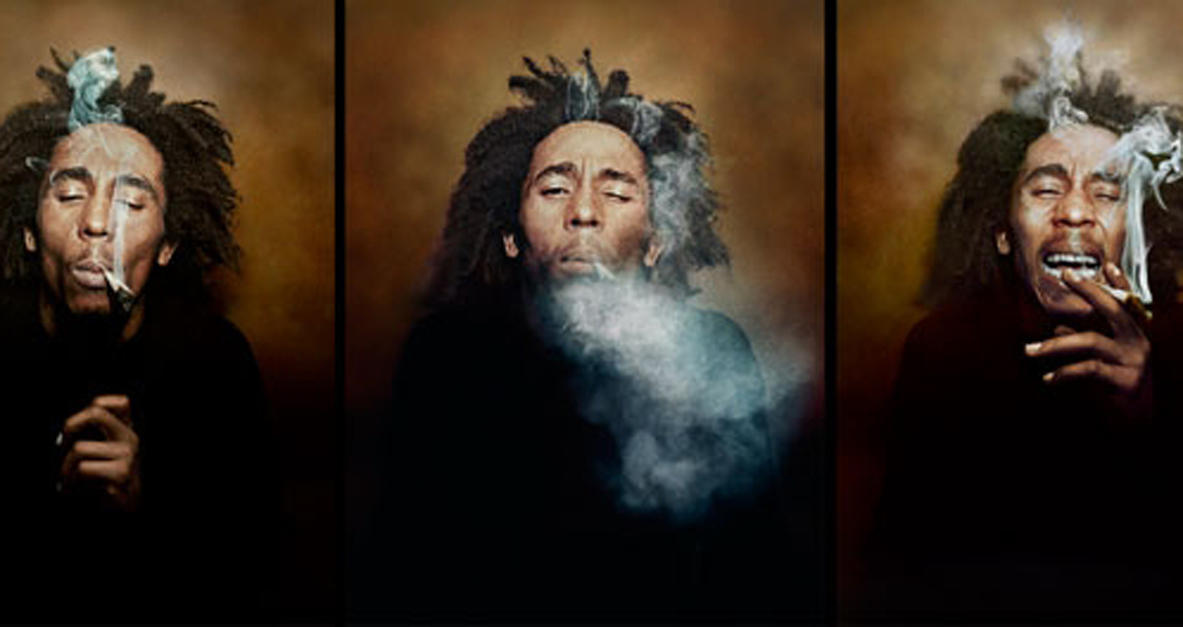

The dual releases of Catch a Fire under both group names is where this marketing confusion began. This follows the confusion generated by their company Tuff Gong Records (registered in 1973) and the similarly-named Tuff Gong International (registered by the Bob Marley Estate in 1991) this resulted in the 1999 Tuff Gong Settlement Agreement, which sought to separate the group's catalog from Bob Marley's solo catalog. The group title Bob Marley and the Wailers being used on Bob Marley solo albums has created a lot of marketing and identity confusion for The Wailers' catalog. It is regarded as one of the top reggae albums of all time. Critical acclaim has included the album being listed at number 126 on Rolling Stone's 500 Greatest Albums of All Time, second only to Legend among five Bob Marley albums on the list. Catch a Fire peaked at number 171 on the Billboard 200 and number 51 on the Billboard Black Albums charts. The Catch a Fire Tour, which covered England and the United States, helped generate international interest in the band. The album had a limited original release under the name The Wailers in a sleeve depicting a Zippo lighter, designed by graphic artists Rod Dyer and Bob Weiner subsequent releases had an alternative cover designed by John Bonis, featuring an Esther Anderson portrait of Marley smoking a " spliff", and crediting the band as Bob Marley and the Wailers.

After Marley returned with the tapes to London, Blackwell reworked the tracks at Island Studios, with contributions by Muscle Shoals session musician Wayne Perkins, who played guitar on three overdubbed tracks. For the immediate follow-up album, Burnin', also released in 1973, he contributed four songs. While Bunny Wailer is not credited as a writer, the group's writing style was a collective process. The album has nine songs, two of which were written and composed by Peter Tosh the remaining seven were by Bob Marley. They instead used this money to pay their fares back home, where they completed the recordings that constitute Catch a Fire. The band did not have enough money to return to Jamaica, so their road manager Brent Clarke approached producer Chris Blackwell, who agreed to advance The Wailers money for an album. After finishing a UK tour with Johnny Nash, they had started laying down tracks for JAD Records when a disputed CBS contract with Danny Sims created tensions. It was their first album released by Island Records. And that Marley supposedly substituted the word “doctor” with sheriff.The sleeve art from the 1974 issue of the albumĬatch a Fire is the fifth studio album by the reggae band The Wailers (aka Bob Marley and the Wailers), released in April 1973. In a twist of fate, Marley’s former girlfriend Esther Anderson claimed in 2012 that the lyrics, Sheriff John Brown always hated me / For what, I don’t know / Every time I plant a seed / He said, ‘Kill it before it grow,’ actually had to do with birth control and her use of the pill.


(Now, though, rap is the predominant music and culture in many areas of the world, its trap percussion and beats have even entered country music, featured on likely and unlikely sources like Morgan Wallen’s “ You Proof“). Marley’s song was often cited by Ice-T’s supporters, who claimed hypocrisy, saying there was not the same amount of outrage for the reggae track that dealt with the same subject matter as there was for the rap track, as rap and Hip-Hop had yet to take over as the main form of entertainment in 1992. In 1992, as the controversial song “Cop Killer” by rapper Ice-T was becoming more and more famous, Ice-T’s supporters pointed to Marley’s song as evidence of prior popular releases touching on similar justice-minded subject matter. It’s certainly a touchy subject-especially today-but the meaning is born, as Marley says, out of a sense of justice and self-defense, not rage. But the gun violence wasn’t blind: he did not “shoot the deputy.” Meaning, that he was not indiscriminately firing at all people in uniform, just those looking to take his life. Of the song, Marley himself said, “I want to say I shot the police but the government would have made a fuss so I said ‘I shot the sheriff’ instead… but it’s the same idea: justice.”įeeling persecuted, Marley wrote the protest song about self-defense, meaning that the protagonist in the song saw the “Sheriff” aiming at him, so he shot first.


 0 kommentar(er)
0 kommentar(er)
